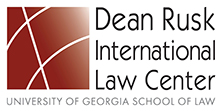Abstract
As the new information age develops and grows in all areas of communication technologies, it imposes new challenges to the legal system in protecting individuals and companies. These new challenges are the result of the Internet increase in scope and complexity. While society is receiving great benefits from the Internet, they are also confronting a new type of crime, cyber crime. Cyber crime includes a wide variety of illegal acts committed using the computer, and because of the continuous technology developments is impossible to create an exhaustive list of all actions considered a cyber crime. In order to facilitate the investigation of cyber crime the U. S. Department of Justice has classified them in three broad categories: when the computer is used as a target or the medium or its use is incidental to other criminal offenses. Crimes using a computer as a target or victim of an offense include actions that intrude the confidentiality, integrity or availability of the information or services. The second category includes actions where the computer is used as the tool to commit traditional criminal conduct. This category includes those crimes that have been occurring in the physical world, but now we are seeing with increasing frequency on the Internet. Examples of this type include child pornography, fraud and intellectual property violations. In the third category, the computer is used to store data, which contains evidence of fraud, white collar crimes and viruses for example, and therefore its use is considered to be incidental to the criminal act. In this thesis, I will study primarily the intellectual property crimes committed using the Internet as a tool or medium. This classification includes criminal activity that can be performed by other means, but the criminal has chosen to use the computer as the mechanism. I will also discuss the international dimensions and dilemmas of this crime and as Janet Reno said, “how critical is to create treaties for international cooperation to reduce the threat”. “One of the biggest challenges has been to implement an effective matrix of bilateral mutual legal assistance and extradition treaties.” Janet Reno, Conference held on September 2000. Chapter 2 discusses the impact of cybercrime against Intellectual Property Rights in the evolution and creation of new intellectual property legislation. Specifically, the absence of a legal scheme that can effectively address the prosecution of cybercriminals. The second part of this chapter contains some of the most significant legislation to prosecute cybercrime, follow by a brief discussion and application of each one. Further, Chapter 3 focus in the challenges this crime create in the conduction of the criminal investigation, how the FBI surveillance works and it impact on private citizens and businesses. The controversies Carnivore has created. Including a discussion on how this type of crime endangers citizens and legitimate businesses causing them multi-millionaire losses. And what Congress should do to combat the crime as well as what we can do to cooperate. Chapter 4 discusses the jurisdictional problems confronted in the prosecution of cybercrime due to the nature of the World Wide Web and the lack of assistance from other countries. The second part contains some of the most controversial constitutional problems arising from the use of Carnivore.
Repository Citation
Ayala, Karissa, "Cybercrime" (2004). LLM Theses and Essays. 59.
https://digitalcommons.law.uga.edu/stu_llm/59


